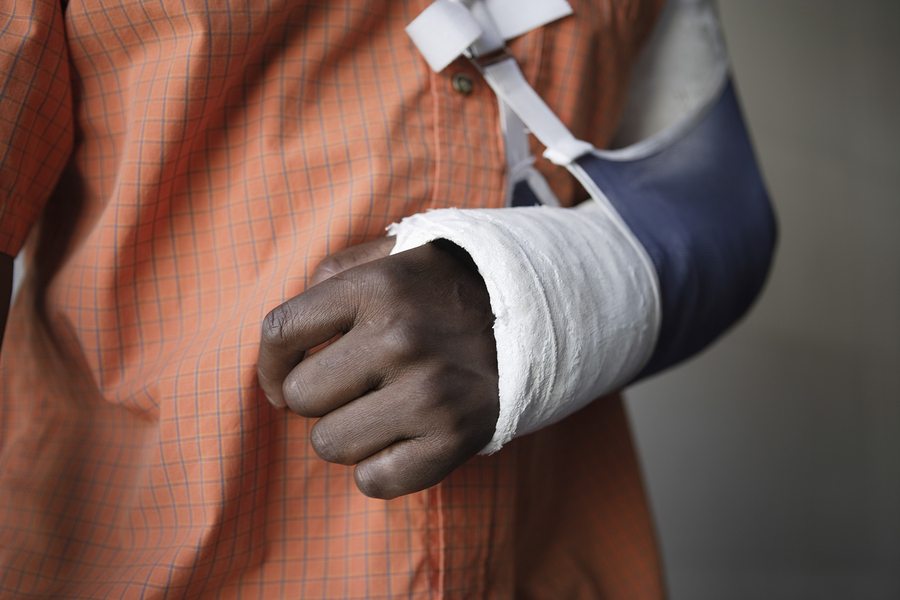Statistically speaking, taxi accidents pose a greater risk to cyclists and pedestrians than to vehicle occupants. However, that doesn’t mean cab passengers or passengers in other vehicles are completely safe from injuries when a crash or collision occurs. If you were injured in a taxi crash in New York City, you may be able to recover compensation for the earnings you lost, as well as various medical bills resulting from your injuries. But did you know you may also be able to get compensated for the pain and suffering you experienced due to your accident? Here, our Brooklyn car accident lawyers explain some basic information about recovering non-economic damages after you have been injured in a cab crash caused by a negligent taxi driver.
No-Fault Auto Insurance: New York’s Serious Injury Threshold for Cab Accidents

New York belongs to a minority of states which follow the no-fault system for car accidents. In no-fault states like New York, it doesn’t matter which driver was responsible for causing the crash – regardless of who was to blame, generally both drivers will initially look to their own insurers for compensation. (An accident claim you make with your own insurance company is known as a “first-party claim,” in contrast to a “third-party claim” or claim you make with the other driver’s insurance company.)
In order to circumvent New York’s no-fault auto insurance system and hold the other driver liable for your injuries, you must have sustained certain types of injuries, a standard sometimes referred to as the “serious injury threshold.” Many states follow the same principle, though each defines “serious injuries” differently. In New York, a taxi accident victim meets the serious injury threshold, as provided by NY Insurance Law § 5102(d), when his or her injuries lead to any of the following:
- Any bone fracture of any type, anywhere in the body.
- Death or wrongful death.
- Dismemberment (loss of limb).
- Loss of a fetus.
- Permanent limitation to the use of any organ, limb, or body part.
- Permanent loss of any bodily function, organ, limb, or body part, such as paralysis caused by a Brooklyn spinal cord injury.
- Significant disfigurement, such as scars from burn injuries.
- Significant (though not necessarily permanent) limitation to any bodily function or system of the body.
- Any temporary, doctor-diagnosed injury or impairment that stops the victim from doing most of the activities they normally do, for at least 90 days out of the 180 days right after the injury or impairment occurs.
Even if you did not suffer a serious injury from the list above, you can still potentially hold the other driver liable if your financial losses exceeded $50,000. However, there are legal distinctions between compensation for financial losses and compensation for pain and suffering, which is precisely what we’ll be exploring next.
Are There Limits to How Much Compensation a Crash Victim Can Receive for Pain and Suffering in Brooklyn?

Compensation for the harms and losses resulting from death or personal injury are known as “damages.” Damages can be divided into several different categories, which serve different purposes.
For example, compensation intended only to compensate the victim is called “compensatory” damages. By comparison, “punitive” damages – which are not always available – go one step further, actually punishing the defendant while simultaneously serving as a deterrent against repeats of similar misconduct in the future. Punitive damages are recoverable only in cases where the defendant’s negligence was egregious and extreme.
When it comes to getting compensated for pain and suffering, the distinction between “economic” damages and “non-economic” damages is even more important. As you can probably guess from the terms, economic damages compensate financial losses, such as medical bills and lost income. Economic damages are comparatively straightforward, because they are based on itemized, calculable, objective losses and expenses.
Non-economic damages attempt to compensate the victim’s non-financial losses, like the pain, suffering, and mental anguish they experienced due to their injuries. For obvious reasons, no one can place an objective or “correct” value on an accident victim’s pain. However, with the goal of arriving at a reasonable figure, the jury will consider factors like the victim’s age, the severity of the injuries, and how long the injuries are expected to last.
Many states place different limits, which are called “damages caps,” on the amount of compensation personal injury victims can recover for their financial and non-financial losses. It is common for states to have no limit on economic damages, but to restrict non-economic damages heavily.
New York is somewhat unusual in that it does not limit either, meaning there is no predetermined ceiling on the amount of compensation an injury victim may receive for their pain, suffering, and other non-financial hardships. The amount of compensation a taxi crash victim can recover in New York will ultimately depend on factors like the severity of their injuries, whether they were supporting any dependents, and the extent to which they lost the ability to work and earn income due to the accident.
Trust an NYC Injury Lawyer to Fight for You
If you were hit by a taxi in Brooklyn, Queens, or Manhattan in a pedestrian accident or while riding your bike, the experienced car accident lawyers of Sullivan & Galleshaw may be able to help you get compensated. We also handle multi-vehicle accidents, such as head-on collisions, rear-end collisions, and intersection accidents. To talk about whether you might have a personal injury claim, call our law offices at (718) 747-9706 for a free and confidential legal consultation.